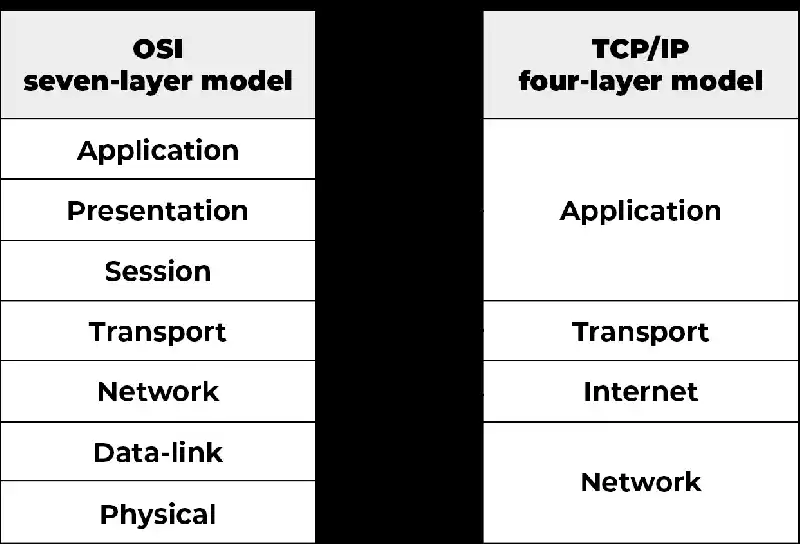What is TCP/IP?
itMyt Explains Transmission Control Protocol/Internet Protocol:
Transmission Control Protocol/Internet Protocol (TCP/IP) is the language a Computer uses to get entry to the Internet. It includes a suite of Protocols designed to establish a Network of networks to offer a Host with get right of entry to to the internet.
TCP/IP is Chargeable for complete-fledged internet facts connectivity and transmitting the statistics quit to stop through supplying other Functions, inclusive of addressing, mapPing and acknowledgment. TCP/IP carries four Layers, which Range barely from the OSI version.
The era is so not unusual that one could not often use the overall name. In other phrases, in common usage the Acronym is now the term itself.

What Does Transmission Control Protocol/Internet Protocol Mean?
Nearly all Computer Systems these days support TCP/IP. TCP/IP is not a single Networking protocol – it's miles a suite of protocols named after the 2 most crucial protocols or layers within it – Transmission Control Protocol and Internet Protocol.
As with any Form of verbal excHange, two matters are wanted: a message to transmit and the way to reliably transmit the message. The TCP layer handles the message part. The message is broken down into smaller gadgets, called Packets, which might be then transmitted over the commUnity. The packets are obtained by means of the corresponding TCP layer in the Receiver and reassembled into the unique message.
The IP layer is often involved with the transmission Component. This is finished through a unique IP deal with assigned to every and each lively recipient at the network.
In other phrases, when a message is desPatched, it's miles damaged into many packets that should reach their vacation spot. The IP portion of the TCP/IP Makes positive they arrive at the best area with the aid of traversing specific paths. Each packet is Forwarded via all Gateway Nodes on the commuNity via checking the IP deal with of the receiver.
The TCP element first guarantees that the connection among sender and receiver is maintained from before the primary packet is despatched to after the closing one is reassembled. The TCP is then responsible for assembling all of the packets in the proper order, asking for lacking packets to be despatched returned, after which affords a confirmation to the sender that the message turned into received efficiently.
TCP/IP is taken into consideration a Stateless Protocol suite due to the fact every consumer connection is newly made without regard to whether or not a previous connection had been Mounted.
Common protocols of TCP/IP consist of the Hyper Text Transfer Protocol(HTTP) and Secure HTTP (HTTPS) to handle conversation among a Web Browser and a Web Server, and the File Transfer Protocol (FTP) to deal with transmission of information among Computers.
TCP/IP fashions are divided in four layers:
-
Application Layer: Handles the information of conversation on the application level.
-
Transport Layer: Establishes and continues a statistics connection and trade between two Devices.
-
Network Layer: Also called the internet layer, it handles the motion of packets around the network and throughout other networks.
-
Physical Layer: It handles the physical parts of the communique between hosts within the same network using Wireless connections, Ethernet cables, and so on. It is likewise referred to as the statistics link layer or Interface layer.
If you do not agree with the definition or meaning of a certain term or acronym for "Transmission Control Protocol/Internet Protocol", we welcome your input and encourage you to send us your own definition or abbreviation meaning. We value the diversity of perspectives and understand that technology is constantly evolving. By allowing users to contribute their own interpretations, we aim to create a more inclusive and accurate representation of definitions and acronyms on our website.
Your contributions can help us improve the content and ensure that it reflects a wider range of meanings and interpretations to the "Transmission Control Protocol/Internet Protocol". We believe in the power of collaboration and community engagement, and we appreciate your willingness to share your knowledge and insights.
To submit your definition or abbreviation meaning for "Transmission Control Protocol/Internet Protocol", please use the provided contact form on our website or reach out to our support team directly. We will review your submission and, if appropriate, update the information on our site accordingly.
By working together, we can create a more comprehensive and informative resource that benefits everyone. Thank you for your participation and for helping us maintain the accuracy and relevance of our "Transmission Control Protocol/Internet Protocol" definition.
Your Score to Transmission Control Protocol/Internet Protocol article
Score: 5 out of 5 (1 voters)
Be the first to comment on the Transmission Control Protocol/Internet Protocol